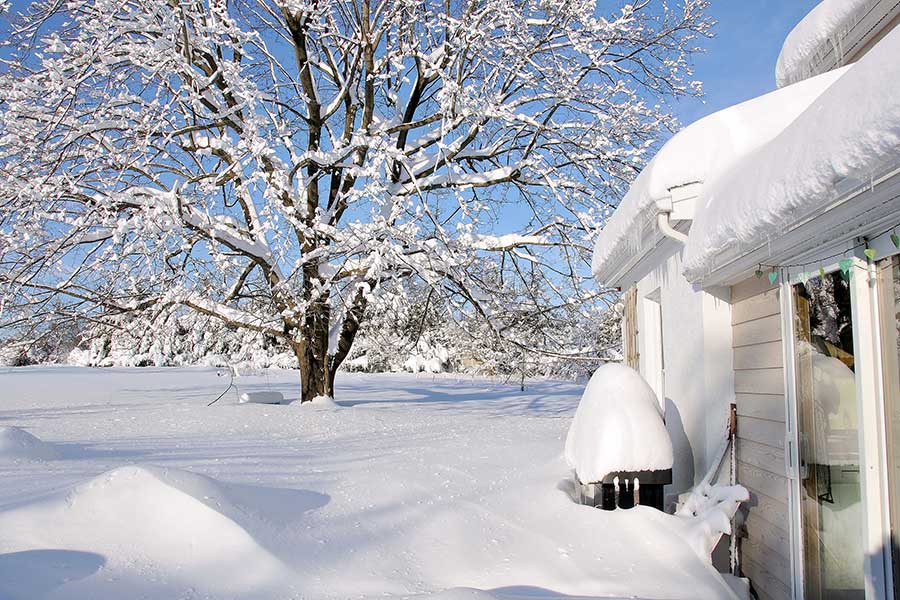
Erie, Pennsylvania, is situated on the southern shores of Lake Erie, in a region known for challenging winters. Some of us like snowy winters with skiing, snowmobiling, and ice fishing, and others not so much, which leads us to wonder does Erie receive a lot of snow.
Erie is a very snowy place. In an average winter, Erie gets about 103 inches of snow – that’s eight feet seven inches. It receives lake effect snow, which can dump huge amounts of snow in a short period. Erie is not actually the snowiest city in America, but it is definitely in the top ten.
What have been some of Erie’s most significant snowfalls? Is Erie the snowiest city in the United States? What month is the snowiest in Erie? Read on to learn more about the winter months in the extraordinary town of Erie.
Erie: A Very Snowy City
Despite its reputation for having harsh and snowy winters, about 94,000 people live in Erie, making it the fifth-largest city in Pennsylvania. The seaport at Erie connects to the Atlantic Ocean and the rest of the Great Lakes via the St. Lawrence Seaway, which makes the city a vital link for trade in the region. Erie is also home to a thriving service sector and many modern manufacturing plants, making it a good place to live.
In addition, Erie is a great place for snow lovers to live. An average winter in Erie will bring between eight and nine feet of snow, which is enough snow to cover an adult African forest elephant!
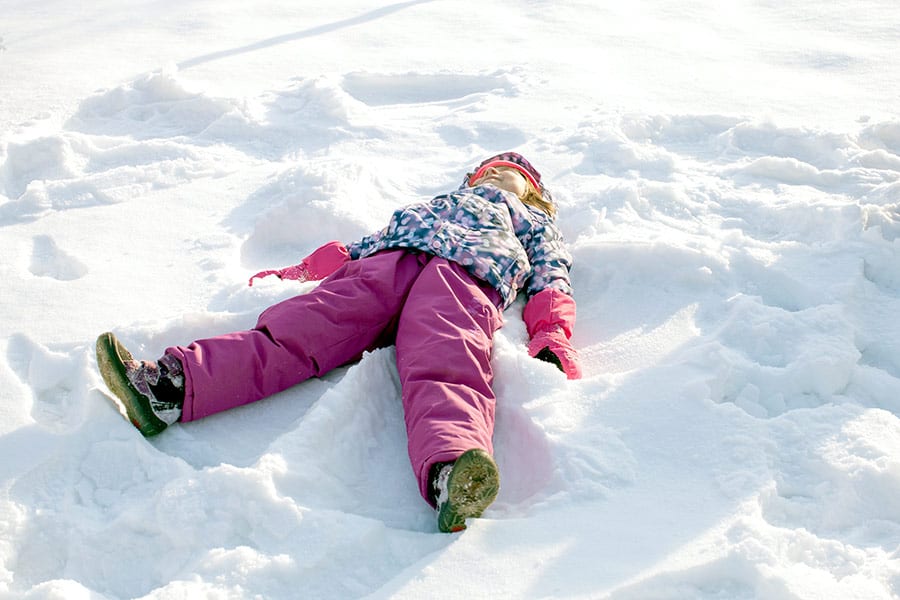
While many people might shudder at the idea of eight to nine feet of snow, there are plenty of things to love about snow. Many people in Erie like to go snowshoeing or cross-country skiing at Asbury Woods. Kids and grownups both enjoy sledding after a heavy snowfall, and there are plenty of great places to sled around Erie.
If you prefer motorsports, the massive snowfall in Erie makes for great snowmobiling. Plus, it has a great winter aesthetic. You’ll always have a white Christmas in Erie. And your seasonal decorations will just pop in the snow.
As much as we all enjoy a winter wonderland, heavy winter storms in Erie can sometimes lead to catastrophe. On February 21, 1986, US Airways Flight 499 skidded off the runway at Erie International Airport while landing in a heavy snowstorm. In 2007, a severe snowstorm caused a 50-car pileup on I-90 near Erie. Snowy weather can cause problems.
Even if the heavy snow doesn’t cause a minor disaster, it is painful to deal with. Snowstorms can sometimes cause traffic to snarl in the city as plow operators do their best to keep up. In addition, road conditions often become slick, and falling snow can cause whiteout conditions that blind drivers or severely restrict visibility.
While the city plows the roads, homeowners and businesses are left to their own devices when it comes to snow removal. Many Erie residents have invested in plows and snowblowers, but others must use shovels or scoops to clear their driveways.
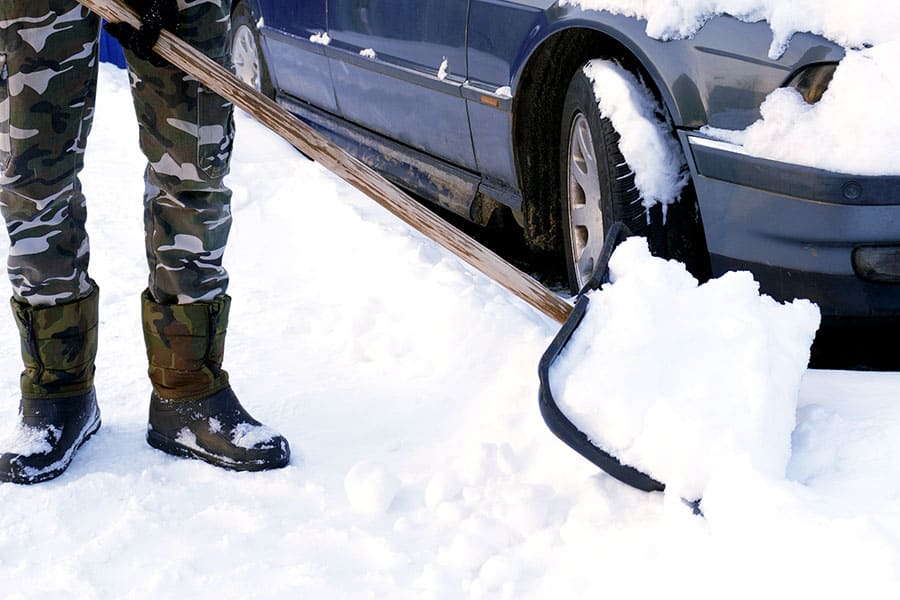
Clearing snow is a vigorous physical activity, and it is not uncommon for people to suffer from heart attacks while shoveling.
In addition to the problem of removing snow from driveways and sidewalks, homeowners must plan to manage how much snow is on their roofs. Snow can weigh up to 2 pounds per square foot per inch. In other words, one inch of snow on an average-sized roof can weigh almost two tons. Four inches of snow on a roof could weigh as much as 16,000 pounds!
So when does Winter begin in Erie? The earliest recorded snowfall in the city was on October 18, 1933, but the snowy season in Erie usually starts in November. In rare years, November will yield no snow; in 1999, Erie had to wait until December 21 to see its first snow.
Snowfall generally increases through December and reaches its maximum in January. After January, snowfall totals begin to taper down until about April, as spring begins to emerge from beneath the winter’s icy crust. Some winters leave town earlier than others. In 1946, Erie residents saw the final snow of the season on February 19, which was pretty darn early. They made up for it in 1967 when Erie had a snowstorm on April 24!
Keystone Answers Fun Fact: It can take a single snowflake up to an hour to fall from its cloud to the ground.
Does Erie Get Lake Effect Snow?
Like much of the upper midwest, Erie is subject to lake effect snow. Lake effect snow happens when masses of cold air move over the relatively warm water of the Great Lakes. The cold air mass absorbs warmth and moisture from the lakes, which forms massive bands of clouds. As the air mass pushes these clouds over land, they erupt into heavy snowfall, sometimes at rates exceeding three inches an hour.
Lake effect snow is affected by a lot of variables. Sometimes, an area of just a few square miles will get blanketed with snow, while areas nearby get nothing. Other times, the entire region will get walloped with winter weather.
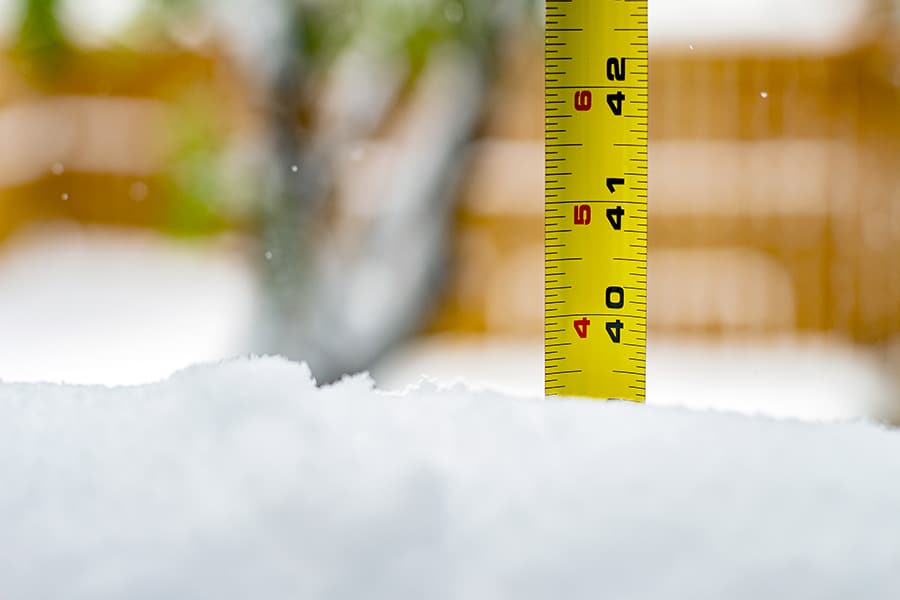
Indeed, the lake effect can produce monstrous snowfalls. On average, Erie gets about 103 inches of snow a year, which equals 8 feet 7 inches. Some years are well above that average. A blizzard in 1950 dropped 25.7 inches on Erie in two days; a seven-day storm lasting from December 27 of 2001 to January 2 of 2002 plopped down nearly 40 inches of snow.
The winter of 2017-2018 was record-breaking. During an extreme lake effect snowstorm in December 2017, Erie got five feet of snow over two days. In addition, the Erie Airport reported an incredible 34 inches of snow in 24 hours on Christmas Day of 2017. The grand total for the winter of 17-18 was 166.3 inches of snow, nearly fourteen feet!
Some of Erie’s lake effect storms even include unusual weather phenomena like thundersnow and the incredible snownadoes. These might sound like the titles of bad sci-fi movies, but they’re real (but rare) weather events.
Thundersnow is a phenomenon where snowfall is accompanied by thunder and lightning. The weather pattern is just like a convective thunderstorm but much smaller and with a lower ceiling. Thundersnow is pretty cool: seeing bursts of lightning and hearing snow-muffled thunder is a unique and beautiful experience. Remember that the lightning in a thundersnow is just as hazardous as the lightning in a thunderstorm.
Snownadoes are exactly what they sound like: snow tornadoes. They are usually small, not especially powerful, and much less destructive than regular tornadoes. That said, they can pick up debris and even moderately large objects, so be cautious if there are snownadoes in the forecast.
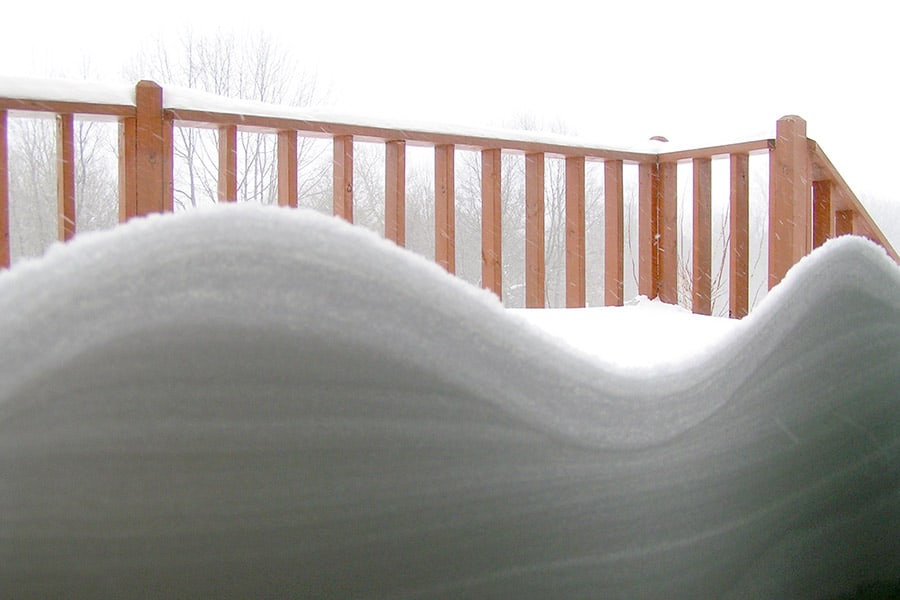
What is the Snowiest Month in Erie?
According to data from the National Weather Service, January is the snowiest month in Erie. The average January snowfall in Erie is about 31.8 inches.
Snowfall in Erie usually begins in late October or November. November accumulations average about 10 inches, with the average December picking up the pace at 26 inches. February and March get about 19 and 14 inches, respectively, with April closing out the winter months at about 3 inches in an average season.
Why is January so snowy? There are many factors, but most of it has to do with the pattern of arctic air movements. Historically, the seasons bring large shifts in the climate as atmospheric and oceanic conditions respond to the earth’s perpetual cycle of change.
Part of this seasonal shift involves the movement of arctic air masses from the far north. These air masses typically move southeast during January, which often takes them across the Great Lakes, thus generating massive lake effect snow. The time of greatest air mass movement happens to coincide with the month we call January, making January the snowiest month for Erie and most of the Great Lakes region.

Is Erie, PA, the Snowiest City in the US?
Erie certainly is a snowy city, but is it the snowiest city in the United States? Surprisingly, no. The city of Syracuse, New York, is actually the snowiest in America. According to the National Weather Service, Syracuse sees an average annual snowfall of about 128 inches. That is about 25 inches more than an average winter in Erie.
While Syracuse gets the most snow, people often associate Buffalo with heavy snowfalls. To be fair, Buffalo is very snowy – they average about 95 inches of snow a season, which is a respectable amount of wintery sludge. But it is nowhere near Syracuse’s average snowfall and about eight inches less than an average winter in Erie.
Go Play In The Snow
Erie, Pennsylvania, gets tons of snow. An average winter in Erie will bring more than 8 feet of snow. But despite its fearsome reputation and effect on traffic, the snow brings wonderful wintertime activities like skiing, snowmobiling, sledding, snowshoeing, and snowball fights with the kids. So if you want to experience a true winter wonderland, Erie is a great place to be!






